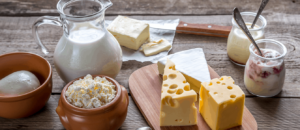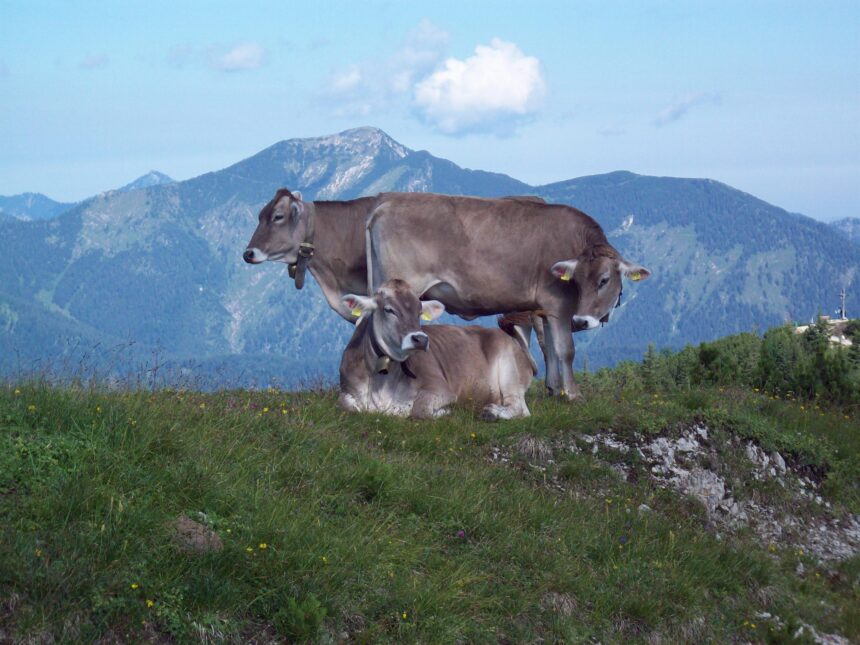Have you ever wondered what makes Alpine milk so special? From its unique taste to its impressive nutritional profile, Alpine milk is a product that has been gaining popularity worldwide. But exactly what is Alpine milk, and why is it considered superior to regular milk? Let’s delve into the world of Alpine milk and uncover its secrets.
The Origins of Alpine Milk
Historical Background
Alpine milk traces its roots back to the traditional dairy farming practices in the Alpine regions of Europe. These areas, with their rich history of agriculture, have been producing high-quality milk for centuries. The knowledge and techniques passed down through generations have helped maintain the high standards associated with Alpine milk today.
Regions Known for Alpine Milk Production
The Alpine regions, including parts of Switzerland, Austria, France, and Italy, are renowned for their dairy farming. The unique environmental conditions in these areas contribute to the exceptional quality of the milk produced.
Characteristics of Alpine Milk
Nutritional Profile
Alpine milk is known for its rich nutritional content. It is loaded with vital minerals, including vitamins, calcium, and protein. The high-quality feed and the natural grazing environment of the cows contribute to the superior nutritional profile of Alpine milk.
Taste and Texture
One of the most distinguishing features of Alpine milk is its taste. It has a creamier texture and a richer, more robust flavor compared to regular milk. This unique taste is often attributed to the diverse flora found in the Alpine pastures, which the cows graze on.
The Alpine Environment
Climate and Geography
The Alpine region’s climate and geography play a significant role in the quality of Alpine milk. The clean, fresh air, pure water sources, and lush pastures create an ideal environment for dairy farming. The high altitudes and cool temperatures also contribute to the health and well-being of the cows.
Impact on Milk Quality
The pristine environment in which Alpine milk is produced ensures that it is free from pollutants and contaminants. The cows’ diet, consisting of a variety of grasses and herbs, imparts a distinctive flavor to the milk, enhancing its overall quality.
Breeds of Cows Producing Alpine Milk
Common Breeds
Several cow breeds are associated with the production of Alpine milk. These include the Brown Swiss, Simmental, and Montbéliarde. Each breed has unique characteristics that contribute to the quality of the milk they produce.
Specific Traits and Qualities
The cows producing Alpine milk are typically hardy breeds that are well-suited to the challenging conditions of the Alpine environment. They are known for their strong constitution and ability to produce high-quality milk with a rich, creamy texture.
Production Process of Alpine Milk
Traditional Methods
Traditional methods of producing Alpine milk involve small-scale farming, with cows grazing freely in the Alpine pastures. Milking is often done by hand or using small-scale machinery, ensuring minimal stress for the animals.
Modern Techniques
Modern production techniques have been integrated into some Alpine milk farms to increase efficiency while maintaining quality. These methods include advanced milking machines and improved feed management practices. However, the core principles of sustainable and ethical farming remain unchanged.
Health Benefits of Alpine Milk
General Health Benefits
Like all milk, Alpine milk is an excellent source of calcium, protein, and essential vitamins, which are crucial for maintaining strong bones, muscles, and overall health.
Unique Benefits Due to the Alpine Environment
Alpine milk may offer additional health benefits due to the cows’ natural diet and the pristine environment in which they are raised. This includes higher levels of beneficial fatty acids and antioxidants, which can support heart health and boost the immune system.
Alpine Milk vs. Regular Milk

Nutritional Comparison
Alpine milk often has a higher nutritional value compared to regular milk, thanks to the natural grazing practices and high-quality feed. It typically contains more omega-3 fatty acids, vitamins, and minerals.
Taste and Quality Differences
The taste and quality of Alpine milk set it apart from regular milk. Its creamy texture and rich flavor are often considered superior, making it a favorite among milk connoisseurs and chefs.
Uses of Alpine Milk
In Cooking and Baking

Because of its rich flavor, alpine milk is perfect for baking and cooking. It enhances the taste of recipes, from creamy soups and sauces to delicious baked goods.
In Dairy Products

Alpine milk is also used to produce a variety of dairy products, including cheese, yogurt, and butter. The excellent quality of the milk contributes to the great taste and texture of these items.
Sustainability and Ethical Practices
Sustainable Farming Practices
Sustainability is a key focus in the production of Alpine milk. Many farms adhere to organic farming practices, ensuring that the environment is preserved and that the cows are raised in a natural, healthy setting.
Animal Welfare
In the production of Alpine milk, animal welfare is paramount. Cows are typically allowed to graze freely, and their well-being is closely monitored to ensure they live healthy, stress-free lives.
Popular Brands and Producers
Notable Alpine Milk Brands
Several brands are renowned for their high-quality Alpine milk. These include Emmi (Switzerland), Laiterie de Montaigu (France), and Berglandmilch (Austria). These brands are celebrated for their commitment to quality and sustainability.
Small-Scale Producers
In addition to well-known brands, numerous small-scale producers contribute to the Alpine milk market. These producers often use traditional methods and cater to local markets, offering unique and artisanal products.
Consumer Reviews and Testimonials
Personal Experiences
Consumers often rave about the taste and quality of Alpine milk. Many note its creamy texture and rich flavor, which set it apart from other types of milk.
Popular Opinions
Popular opinions highlight the nutritional benefits and the ethical farming practices associated with Alpine milk. Consumers appreciate knowing that the milk they are drinking comes from well-cared-for cows in a pristine environment.
Where to Buy Alpine Milk
Availability in Stores
Alpine milk is available in many supermarkets and specialty stores, particularly in regions close to the Alps. It’s often found in the organic or premium dairy section.
Online Purchasing Options
For those who cannot find Alpine milk locally, many producers offer online purchasing options. This allows consumers to enjoy high-quality Alpine milk no matter where they are located.
Alpine Milk Recipes
Simple Recipes to Try
Here are a few simple recipes to try with Alpine milk:
- Creamy Alpine Milk Porridge: Start your day with a warm, comforting bowl of porridge made with Alpine milk. The rich flavor of the milk enhances the taste, making it a delightful breakfast option.
- Alpine Milk Smoothie: Blend Alpine milk with your favorite fruits and a touch of honey for a refreshing and nutritious smoothie.
Traditional Alpine Dishes
- Alpine Cheese Fondue: Use Alpine milk to make a traditional cheese fondue. The high-quality milk contributes to a smoother, richer cheese sauce.
- Rösti: A Swiss potato dish that can be enhanced with a splash of Alpine milk for added creaminess and flavor.
More Read: Is Müller Rice Healthy? Unveiling the Truth Behind This Popular Snack
Conclusion
Alpine milk is a product of its environment – pristine, natural, and rich in quality. Its unique characteristics, from its nutritional benefits to its superior taste, make it a standout choice for milk lovers. Whether enjoyed on its own, used in recipes, or as the base for delicious dairy products, Alpine milk offers an unparalleled experience.
FAQs
Is Alpine milk lactose-free?
No, Alpine milk is not inherently lactose-free. However, lactose-free versions may be available from some producers.
Can Alpine milk be used in place of regular milk?
Yes, Alpine milk can be used in place of regular milk in most recipes and for drinking. Its intense flavor can improve the flavor of your food.
How should Alpine milk be stored?
Alpine milk should be stored in the refrigerator at a temperature of 4°C or below. For optimal taste and quality, it should be consumed within a few days of being opened.
Is Alpine milk suitable for children?
Yes, Alpine milk is suitable for children. Its high nutritional content makes it a healthy choice for growing kids.
What makes Alpine milk more expensive?
The higher cost of Alpine milk can be attributed to sustainable farming practices, the quality of the feed, and the pristine environment in which it is produced. These factors contribute to its superior quality and taste.



